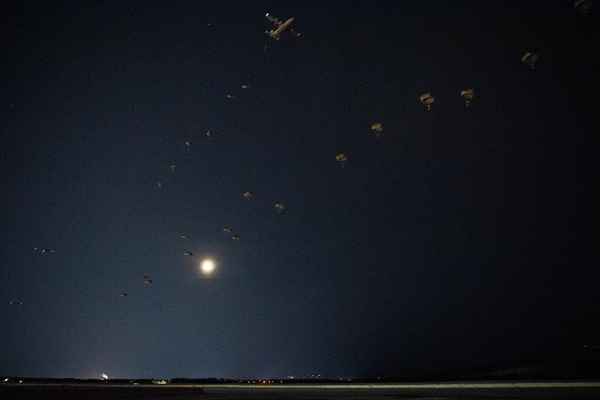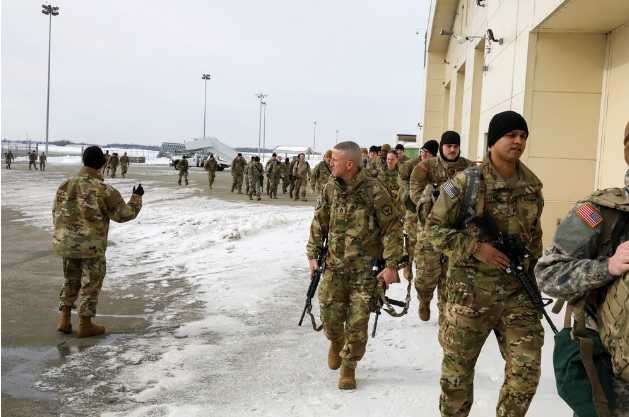
JOINT BASE ELMENDORF-RICHARDSON, Alaska – The 11th Airborne Division’s annual regional combat training center exercise, Joint Pacific Multinational Readiness Center-Alaska 23-02, is set to begin March 27 and continue through April 5, with military vehicles and personnel moving between Fort Wainwright and Joint Base Elmendorf-Richardson and the Eielson Air Force Base area before and after the exercise dates.
Alaska residents will see an increase in convoy traffic and military movements during the exercise around the Yukon Training Area.
The JPMRC exercise focuses on large-scale combat operations and is a cold-weather training event that includes situational training and live-fire exercises designed to build cold weather and mountain-proficient forces prepared for employment within the U.S. Army Pacific area of responsibility.
This exercise will validate the 2nd Infantry Brigade Combat Team, 11th Airborne Division’s cold weather training readiness and capabilities, current equipment cold weather capability and provide detailed feedback and observation of current equipment sets.
The exercise focuses on training for deployment operations in an Arctic environment. It is designed to validate the ability to rapidly deploy a brigade-sized force package quickly and integrate with external elements. JPMRC 23-02 has participants from 3rd Battalion, Princess Patricia’s Canadian Light Infantry, HIMARS from 3rd Battalion, 27th Field Artillery Regiment; and other enablers from the across the Army.
Roughly 8,000 personnel will have roles in the exercise, with a command element from the 11th Airborne Division, along with support elements from the 1st Infantry Brigade Combat Team, 11th Airborne Division; the 1st Battalion, 52nd Aviation Regiment; and the 17th Combat Sustainment Support Battalion to provide additional personnel and equipment to increase the realism of the exercise. An augmented battalion from the 1/11th “Arctic Wolves” brigade will act as the opposition force, providing a realistic and challenging opponent to test Arctic tactics, techniques, and procedures.
“This exercise demonstrates the effectiveness of our Arctic training and ability to face a near-peer threat in an Arctic environment,” said Maj. Gen. Brian Eifler, 11th Airborne Division commanding general. “Our Soldiers are trained to deploy on short notice and operate effectively in the deep Alaskan winter.”
Military convoy information
- The main convoy timeline from JBER to Fort Wainwright is March 22-28 as units deploy, and April 6-14 as the units return to JBER.
- Each convoy will conduct a rest overnight at Clear Space Force Station near Anderson, Alaska.
- Convoys during March 29 to April 5 will be between Fort Wainwright and Eielson Air Force Base.
- An estimated 518 to 618 vehicles will be on the road during the deployment and redeployment windows, with approximately 100-125 vehicles per day spread out in multiple serials departing each hour.
- The primary route is via the Parks Highway from JBER to Fort Wainwright and the Richardson Highway from Fort Wainwright to the Yukon Training Area near Eielson Air Force Base.
- Military movements will be enforced and controlled via a dedicated Movement Control Team that will ensure convoys are evenly spaced, tracked, and monitored.
-30-[content id=”79272″]








